It’s possible that everything you thought you knew about how much weight you should lift and how many reps you should do to build muscle could be wrong. But if it is, it’s nothing to be upset about. For many people, the recent discovery that you can build as much muscle lifting light weights for high reps as you can lifting moderate weights or heavy weights is great news. Read on to learn why and how you can gain muscle with light weights.
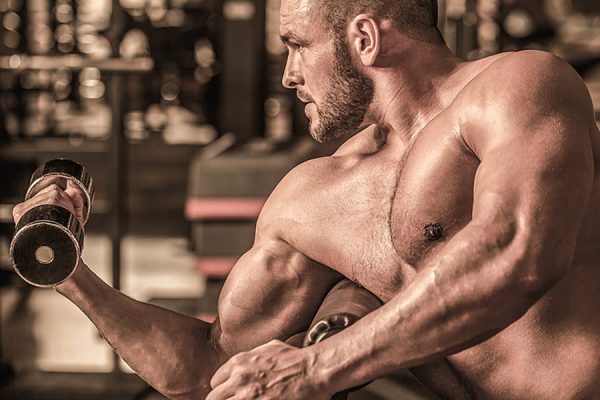
The Strength / Hypertrophy / Endurance Continuum
There are some long-held and revered rules in the field of resistance training that are rarely challenged. The classic paradigm of the strength-endurance continuum has always been one of them…. until now.
Recommendations for how much weight to lift have traditionally been based on this repetition continuum, which refers to the way certain rep ranges and weight loads are associated with specific training effects. Here’s a re-cap of the old paradigm:
- Low reps with heavy weights optimize increases in strength (from 1 to 5 repetitions per set with 80% to 100% of 1-repetition maximum (1RM)
- Moderate reps with moderate weights optimize muscle gains (from 8 to 12 repetitions per set with 60% to 80% of 1RM)
- High reps with light weights optimize muscular endurance (15+ repetitions per set with loads below 60% of 1RM)
The ideal hypertrophy (muscle-building) rep range has always been described as that middle zone with a weight you can lift for 8 to 12 reps (some say it’s 6 to 12 reps) per set. It was believed for a long time that using lighter weights would not stimulate muscle growth, only muscle endurance.
A study in 2015 (Schoenfeld et al) challenged this long held belief.
Here’s what the researchers did: Eighteen young men with at least 3 years of lifting experience were recruited. They were randomly assigned to either the moderately heavy weight (8 to 12 rep) group or the light weight (25 to 35 reps ) group.
For 8 weeks, both groups followed a program of weight lifting 3 days per week on non consecutive days (Monday, Wednesday and Friday – your basic 3-day full body workout). They each performed 3 sets of 7 different exercises working all the major muscles, with mostly compound exercises like squats, seated rows, bench press, shoulder press and so on).
The only difference in the training programs was the rep range and corresponding weight loads. (Obviously, the weights were much lighter in the 25 to 35 rep range group). Also, it’s important to note, the high rep group (which was only using 50% of their 1-rep max weights), trained to failure.
Here’s What The Lighter Weight Vs Heavier Weight Research Found:
1. The heavier (moderate) weight group showed greater increases in strength.
2. The lighter weight group showed greater increases in muscular endurance.
3. Both groups significantly increased their lean mass in the places that were measured – biceps, triceps and quads.
The first two findings were exactly what you would expect: train heavier with fewer reps and you’ll get stronger. Train lighter with higher reps and you’ll develop more endurance, but not as much strength. The surprising finding was number three – that both groups gained equal amounts of muscle size regardless of whether they trained with moderate or light weights.
In the past (and even still today), the majority of lifters would tell you, “There’s no way you can gain the same amount of muscle doing sets of 15, 20 or or even 30 reps with light weights as you can with lower reps and heavy weights.” “Go heavy or go home” has been a meme for decades.
Granted, there have been a handful bodybuilders who went against the grain and included high rep training because they tried it and swore it helped them add more size than the heavy weight training alone, but they have always been the minority.
Tom Platz is a famous example of one (now retired) bodybuilder who trained the squat for very high repetitions (20-30+) and became known for the best leg development of all time. (Note: he did not do high reps alone, he did high reps in addition to heavy weight with low reps).
Having become a fan of Platz when I started training back in the 1980s, I was one of those outliers who took up high rep (20+) squat training and my legs quickly grew to become my best body part. In fact, I did very little heavy, low rep squatting because it frequently lead to straining my lower back. This is only a personal anecdote, but my experience agrees with what the research is now finding all these years later.
How Do We Explain These Results?
Critics of this type of this research have (correctly) pointed out that if the subjects were beginners, then the results may not carry as much significance, because untrained individuals will respond to anything. Even poorly designed programs can produce results in beginners. This is known as the “newbie gains.”
This study was different because the researchers intentionally recruited experienced trainees, with at least 3 years of lifting under their belt. Therefore, newbie gains can’t be the explanation for why high reps built as much muscle as the classic hypertrophy zone of 8 to 12 reps.
But there is a scientific reason for these results. There’s more than one type of muscle fiber and each has different properties, and may be stimulated in different ways. Type II muscle fibers – the fast twitch type – have a greater capacity for growth than Type I fibers. However, that doesn’t mean slow twitch muscle fibers can’t increase in size.
Type I muscle fibers are known as the slow twitch fibers and they are associated with endurance training. These fibers take longer to fatigue so it’s reasonable to assume that high rep sets are required to fully stimulate them. It appears that training with light weights (only 50% of 1RM and in some cases as little as 30% of 1RM) can cause the type I fibers to grow, when the high rep set is taken all the way to fatigue.
The “Good News” Implications Of This Light Weights, High Reps Research
This finding that low load, high rep training can build muscle as well as heavier load training is especially significant for certain populations. In the case of older individuals, it can be of utmost importance. There are a couple of reasons why:
Research data (Straight C, et al 2020) found that older individuals also responded to both higher and lower loading protocols. However, muscle growth was lower in type 2 muscle fibers when training with heavier weights. That translated to a 15% lower gain in muscle fiber size.
It may seem odd that training heavier lead to less muscle growth, but a simple and logical explanation for these results may be the fact that older people have more difficulty training with heavier weights due to joint pain (osteoarthritis, etc).
The fact that you can gain muscle with moderate weights and even light weights is good news for many older lifters who would otherwise get discouraged when one day they can no longer lift heavy like they used to.
Some Cautions When Interpreting And Putting This Research Into Action
A few caveats are in order before anyone jumps to conclusions about what this research means on a practical level.
One is that just because the weights are lighter doesn’t mean the set will be easier. The subjects doing low load lifting who made equal gains as those doing heavier lifting trained to failure. Doing high rep sets to failure can be painful as it produces metabolic acidosis, or what most of us know as “the burn.” Also when you do high rep training on compound exercises like squats and rows, that can be exhausting both to the target muscles and the cardiovascular system. It has even been known to make people feel sick or light-headed.
Another caveat is that these results don’t necessarily mean everyone should give up training in the low or medium rep ranges with heavier weights and train light exclusively. It simply means there is now a scientific rationale for adding some higher rep training into the mix, and if lighter weight training is the only kind you can do, it still works, you simply won’t maximize your strength gains.
Speaking of strength, when this type of research originally emerged, the weight training blogs and social media space blew up with controversy. Some prominent powerlifters and strength athletes noted that in the research, muscle development was the same when comparing heavy, medium or light training if volume was equated. But only the heavy load, lower rep training achieved maximum strength. They argued that if heavier training builds the same muscle size but more muscle strength than lighter training, then the heavy training is superior.
Their point is valid for athletes who have maximum strength goals. But for someone like a bodybuilder with aesthetic goals, or a recreational lifter with general fitness goals, the research supports higher rep training or at least including some high rep work in a program that uses a variety of rep ranges. For gaining muscle, it’s likely ideal to use a combination of lighter, moderate and heavier training.
What if the only type of lifting you can do is high rep training?
There are times in life when you may find yourself unable to lift heavy weights at all.
For example, during the coronavirus outbreak, gyms were closed, almost everyone was forced to train at home, and many people did not have access to anything but light weights (like a small set of dumbbells).
Or, you might be struggling with a flare up of joint pain, and you can still do weight lifting exercises with light weights for high reps, but heavier weights aggravate your pain.
The research suggests that it’s still possible to gain muscle when training only with light weights and high reps, if you do one thing: The key is to train to failure.
Training to failure means you push yourself to keep doing reps until you can’t do another rep with good form. It’s when your muscles literally give out (“fail”) from fatigue.
In a recent study on this subject, published in the Journal of Strength and Conditioning Research (Lasevicius et al 2019), male lifters followed an 8-week training program, with the subjects divided into two groups – a heavier weight group (80% of 1 rep max) and a lighter weight group (only 30% of 1 rep max – that’s really light).
There were 4 protocols tested:
1. Reps to failure with light weight
2. Reps to failure with heavy weight
3. Reps not to failure with light weight
4. Reps not to failure with the heavy weight
Once again, as you would expect, the heavy lifting group increased maximal strength more than the light training group.
However, like the previous study, muscle size increased in both the heavy weight groups as well as the light weight to failure group.
No significant muscle growth was seen in the non-failure light weight group.
A key finding was that when training with heavy weights, going to failure did not increase strength or muscle growth more than stopping slightly short of failure. (When you’re training heavy, you can leave a rep or two in the tank and still make gains). However, taking sets to failure was necessary to trigger muscle growth when training with light weights.
Conclusion
In 2021, a sweeping scientific review by Schoenfeld’s research group reviewed all of the newest studies about low load (high rep) versus high load (low rep) training. They concluded that despite the widespread acceptance of the strength – hypertrophy – endurance repetition continuum theory, the current research fails to support some of its underlying presumptions. They wrote:
“Based on the emerging evidence, we propose a new paradigm whereby muscular adaptations can be obtained, and in some cases optimized, across a wide spectrum of loading zones.”
The most shocking part is this includes weights even as light as 30% 1RM. Also, these new findings are independent of age, training status, or gender. For women, the light training may be even more practical because studies show that women are more fatigue-resistant than men.
Some people are now saying that there is no ideal “hypertrophy zone.” Or at least that you don’t have to train exclusively in the moderate load 8 to 12 rep range to optimize muscle gains.
It’s worth considering however that when you train with very high reps (20-35 or beyond), this takes a lot more time, making super high rep training inefficient. This is a major point given the fact that the number one reported obstacle to consistent lifting is lack of time.
The Most Time-Efficient Training Muscle-Building Program
On the other end of the spectrum, when you train heavy with really low reps (1 to 5), that will also build muscle, but it takes more sets to achieve similar hypertrophy as compared to moderate weights. Since you must take longer rest intervals between heavy sets, this takes at lot longer too. So training on either extreme end of the repetition spectrum is not time efficient either.
In addition, remember that training with light weights for very high reps burns! This discomfort along with the feeling of fatigue can have a negative effect on adherence. On the flip side training extremely heavy can be uncomfortable in it’s own way and could increase the risk of pain or injury, which can also reduce adherence.
If we consider efficiency and practicality, we can make the case that there still is an optimal hypertrophy zone, but it’s wider than we used to think. Anywhere between 6 and 20 reps makes a good target for the optimal zone for muscle growth.
In the final analysis, all of this new research leads us to a few important conclusions:
1. If your goal is maximum strength, training with heavier loads is necessary to optimize top end gains. But you could also include some medium and high rep sets if you also want to optimize size gains. This could also reduce risk of joint pain and injury compared to training really heavy on every exercise at every workout.
2. If your primary goal is muscle growth, your choice of training protocol can be made based on your personal preference and could include a fairly wide range of reps and loads. This choice may also be influenced by your age and joint health. If you can’t train heavy, you can still make gains with only high rep, light weight training to failure.
3. If your goal is muscle growth and you’re able to train heavy, then there’s a good chance you’ll get the maximum gains possible if you combine all the rep ranges – heavy, medium, and light. This is why you see so many physique coaches recommend alternating rep ranges from workout to workout (heavy, medium, and light days, or medium and light days etc).
Whatever your goals or level of training experience, it’s good news for many people, especially older lifters with joint pain, to Know that you can gain muscle with high rep, low load weight training and that you can choose your rep range based on what you prefer and what works best for you.
-Tom Venuto, Author of, Burn the Fat, Feed the Muscle (BFFM)
Author, The BFFM Guide To Flexible Meal Planning For Fat Loss
Founder, Burn the Fat Inner Circle
Related: Training For Muscle After Age 50: How It’s Different Than At 20 Or 30?
PS. Are you serious about training and building muscle, but limited on time? Do you want a muscle building training program that only requires 4 short workouts per week? If so, the most time-efficient, scientifically-proven training program ever released is The New Body (TNB) TURBO Visit this link to learn more

Tom Venuto is a natural bodybuilding and fat loss coach. He is also a recipe creator specializing in fat-burning, muscle-building cooking. Tom is a former competitive bodybuilder and is today a full-time fitness writer, blogger, and author. His book, Burn The Fat, Feed The Muscle is an international bestseller, first as an ebook and now as a hardcover and audiobook. The Body Fat Solution, Tom’s book about emotional eating and long-term weight maintenance, was an Oprah Magazine and Men’s Fitness Magazine pick. Tom is also the founder of Burn The Fat Inner Circle – a fitness support community with over 52,000 members worldwide since 2006. Click here for membership details
Scientific References
Schoenfeld BJ, Peterson MD, Ogborn D, Contreras B, Sonmez GT. Effects of Low- vs. High-Load Resistance Training on Muscle Strength and Hypertrophy in Well-Trained Men. J Strength Cond Res. (10):2954-63, 2015.
Schoenfeld B, et al, Sports, Loading Recommendations for Muscle Strength, Hypertrophy, and Local Endurance: A Re-Examination of the Repetition Continuum, S2021 Feb; 9(2): 32, 2021.
Straight C.R., Improvements in skeletal muscle fiber size with resistance training are age-dependent in older adults: A systematic review and meta-analysis. J. Appl. Physiol. 2020;129:392–403, 2020
Lasevicius T, et al, Muscle Failure Promotes Greater Muscle Hypertrophy in Low-Load but Not in High-Load Resistance Training, Journal of Strength and Conditioning Research. Dec 2019,

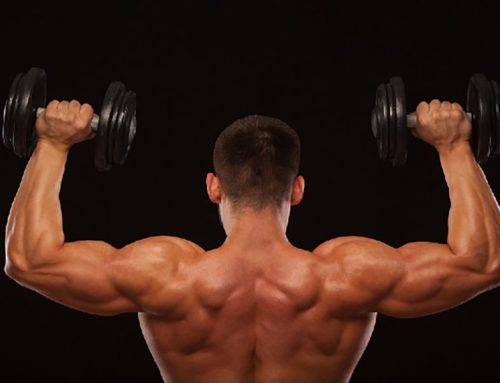
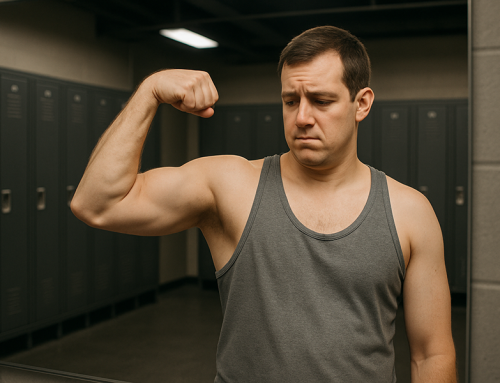
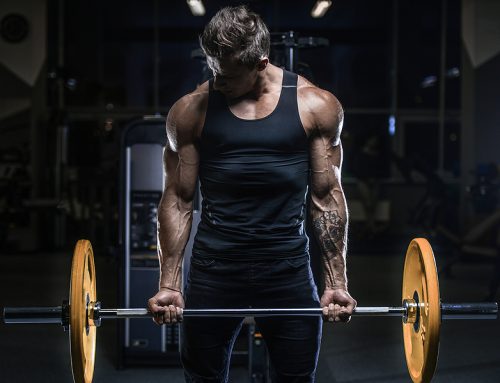
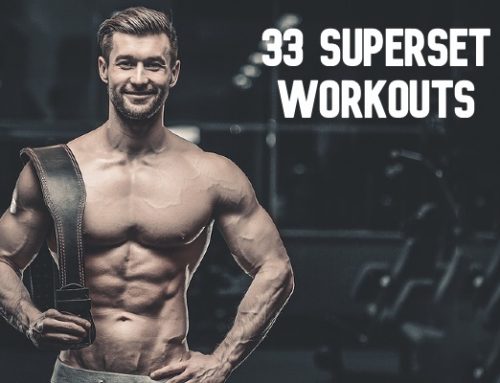
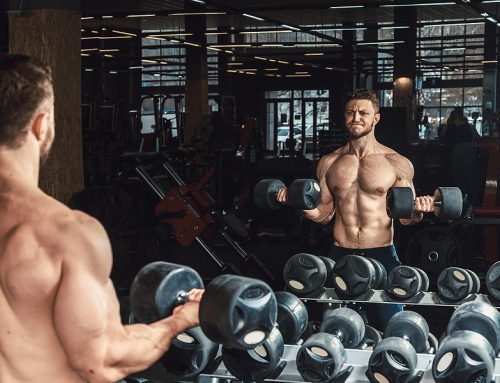
I remember reading about and doing “21’s”. This has been around for a long time and the guys who did them swore by them. When you add up the total reps and sets this was defanately high rep training, but somehow it was not regarded as high rep training back in the day (70′ & 80’s or even earlier)
I did a lot of 21s back in the day, especially for curls. Lots of 20 rep squats too